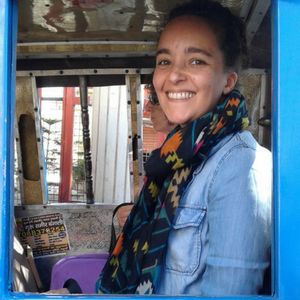This past weekend, the Metta Center hosted our Person-Power Yoga Retreat. As a yoga teacher, I’m constantly exploring links between our individual mind-body health and societal health. I had planned to speak about creating greater peace and happiness within ourselves and around us by consciously hacking our nervous systems. Toward the end of the retreat, we collectively favored group discussion, so we didn’t get around to my talk. Since a few people expressed curiosity about the topic, I’ve re-purposed the ideas into a post. Enjoy!
We are much more than our bodies—we are mind and spirit too. Yet it is very much through our amazing bodies that we live as human beings.
It is through our bodies that we experience person power, our ability to convert destructive states like fear and anger into constructive energies like love and compassion. It therefore makes sense to understand how we can wisely use our bodies to develop our person power.
Do you remember how you first learned about the human body? For many of us who grew up in the US, this grade-school song was lesson #1:
This song conveyed the idea that underneath our skin, we were just bones. But what about the parts of us we can’t easily identify, like the thoughts and emotions that arise and are expressed in our bodies—what is their meaning in our lives? What about the fact that we all came into being on this planet and that, as a result, we’re in this life thing together, not separately? That we’re in relationship with the rest of life around us, because that life makes our existence not only possible but a joy?
Our bodies are bona fide instruments of peace: we can consciously fine-tune our nervous systems to create inner and outer harmony.
To continue with the music metaphor, I’ll draw on artistic advice from the famed cellist Yo-Yo Ma: “With every year of playing, you want to relax one more muscle. Why? Because the more tense you are, the less you can hear.” With a tiny tweak, his words apply to everyone: “With every year of loving, you want to relax one more muscle. Why? Because the more tense you are, the less you can hear.”
In one way or another, nonviolence requires listening—to the verbal and physical communication of others as well as whatever feelings arise in our bodies. If we’re not aware of what arises within ourselves, how can we evolve it or make good use of it?
We’ve all felt rigid in an interpersonal situation, when the harmony between ourselves and someone else was out of whack and we found it really hard to listen. We might have felt the discord in our bodies too, with a tightening in the breath or maybe in the tensity of hunched up shoulders. And we’ve felt the peaceful ease that comes into the body when we open up to the other person so that we can resolve the conflict.
There is another important component of listening to our bodies: self-care. The body can tell us when to slow down, get more rest, spend more time in the woods or surfing or pursuing whatever passions make us feel alive. If we ignore those messages we pay the price with burnout, illness, unhappiness. Listening to our bodies is like person power vitamins—we can’t make a difference if we’re worn out or unhappy. We can’t bring harmony back into a relationship unless we can soften our hearts and minds enough to relax and hear others.
Anyway we slice it, our bodies are involved in making change.
When the stakes are really high, our human bodies are literally on the front lines of change. During Gandhi’s campaigns in India and throughout the civil rights movement, people took on physical abuse, even death, to illustrate injustices. Because the activists had mastered their bodies, by training themselves to forgo reactivity and by anchoring to their spiritual ideals, they changed history.
One of my favorite nonviolence stories highlighting how our bodies can be on the front lines is when Amandine Roche, a human rights worker and yoga teacher, disarmed a suicide bomber while she was working in Afghanistan, with nothing more than a smile. Long story short: her inner voice told her to smile at him, and she listened to that voice. Observing but not caving to her fear, she ran up to him, made eye contact with and smiled at him. That small recognition of his humanity was enough—he took off the suicide vest and walked away. (Hear Roche’s full story in her Peace Paradigm Radio Q&A).
A simple smile, as Roche proved, can do wonders. Science backs this up. As the Italian neuroscientist Marco Iacoboni points out, the mirror neurons in our brains will register the feel-good responses associated with a smile as our own. So fine-tuning the harmony within our bodies, by playing down fear and playing up love, can go a long way in creating peace around us. It might even save lives.
Our incredible human bodies have evolved for love, as Barbara Fredrickson writes in her book Love 2.0: Finding Happiness and Health in Moments of Connection. Physiologically speaking, our chests lift and expand when our bodies and minds feel good, which makes us more open for connecting with others. In the physical practice of yoga, we often do chest-opening poses that replicate this physiology, literally creating a physical memory of love in the body.

One of the body’s most incredible tools at our disposal, as Fredrickson also notes, is the vagus nerve.
The vagus nerve is the 10th cranial nerve. It runs down from the brain stem and travels into the body, where its tree-like roots connect to all our organs, including the heart and lungs.
The world’s religions and mythologies all have their version of a sacred tree or tree of life, and I like to think of the vagus nerve as our personal tree of life. Not only does it oversee the body’s involuntary functions, it also feeds information from the body back to the brain, which then adjusts its instructions to the body accordingly. For example, it regulates the body’s parasympathetic nervous system, which kicks in our calming mechanisms during fight-or-flight responses.
People with strong vagal tone are more resilient to stress and recover more quickly from illness. A low vagal tone can lead to outbreaks of depression and anxiety. Needless to say, having high vagal tone is vital for our person power: it’s key to resiliency and acting from a place of love.
Just like muscles, the vagus nerve can be strengthened with training. With practices like yoga and meditation, we literally build up our vagal tone, consciously boosting the body’s ability to tap the calming powers of the parasympathetic nervous system. We can’t control what happens around us, but we can choose how we respond. Yoga and meditation prepare us to instinctively go with calm, which can help set the conditions by which others tap their own peace.








